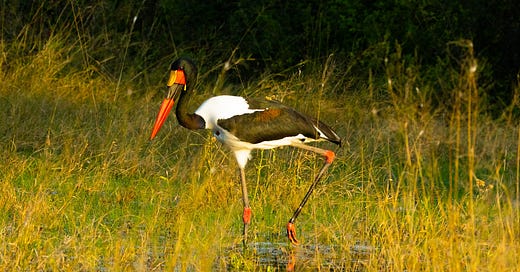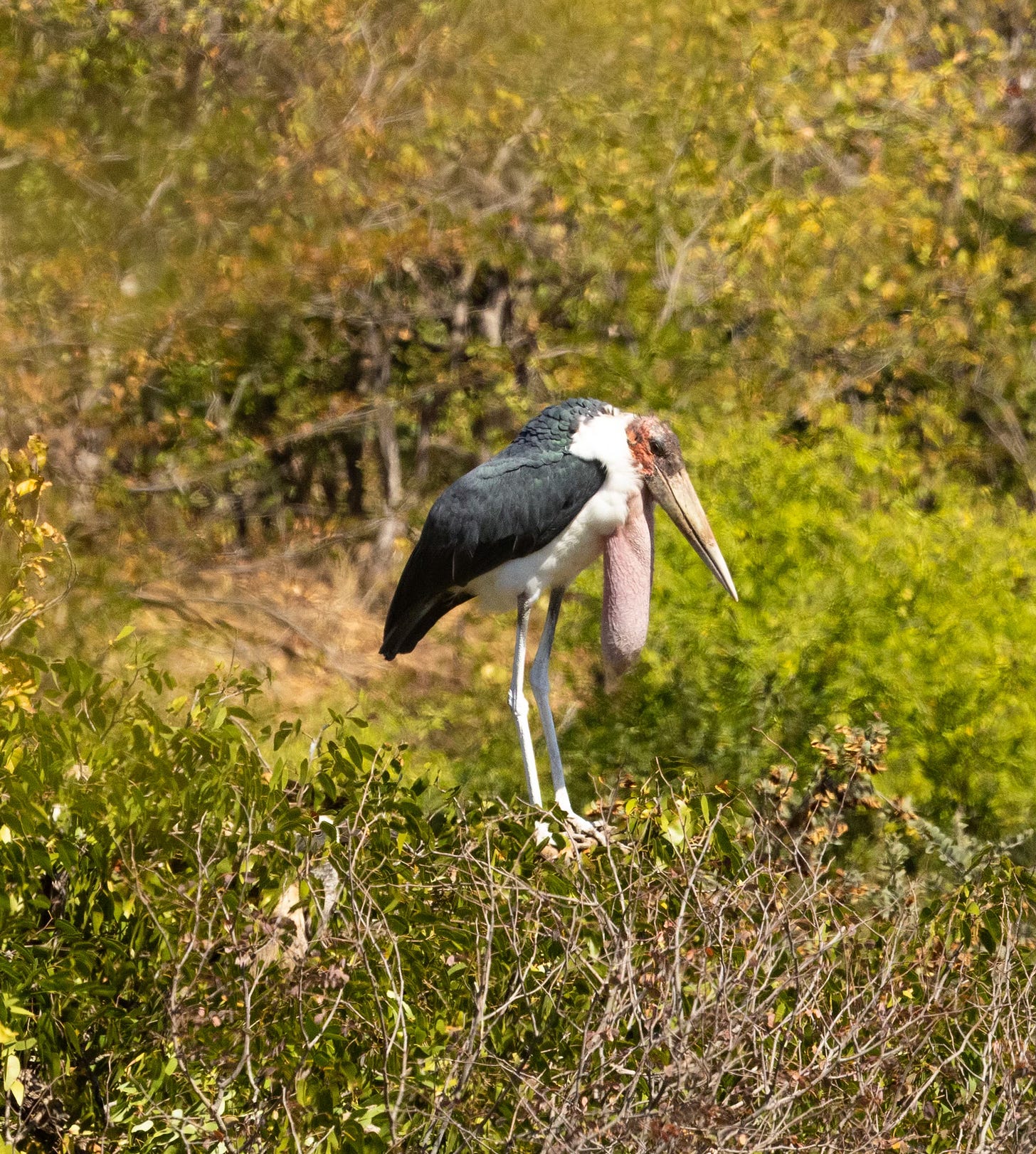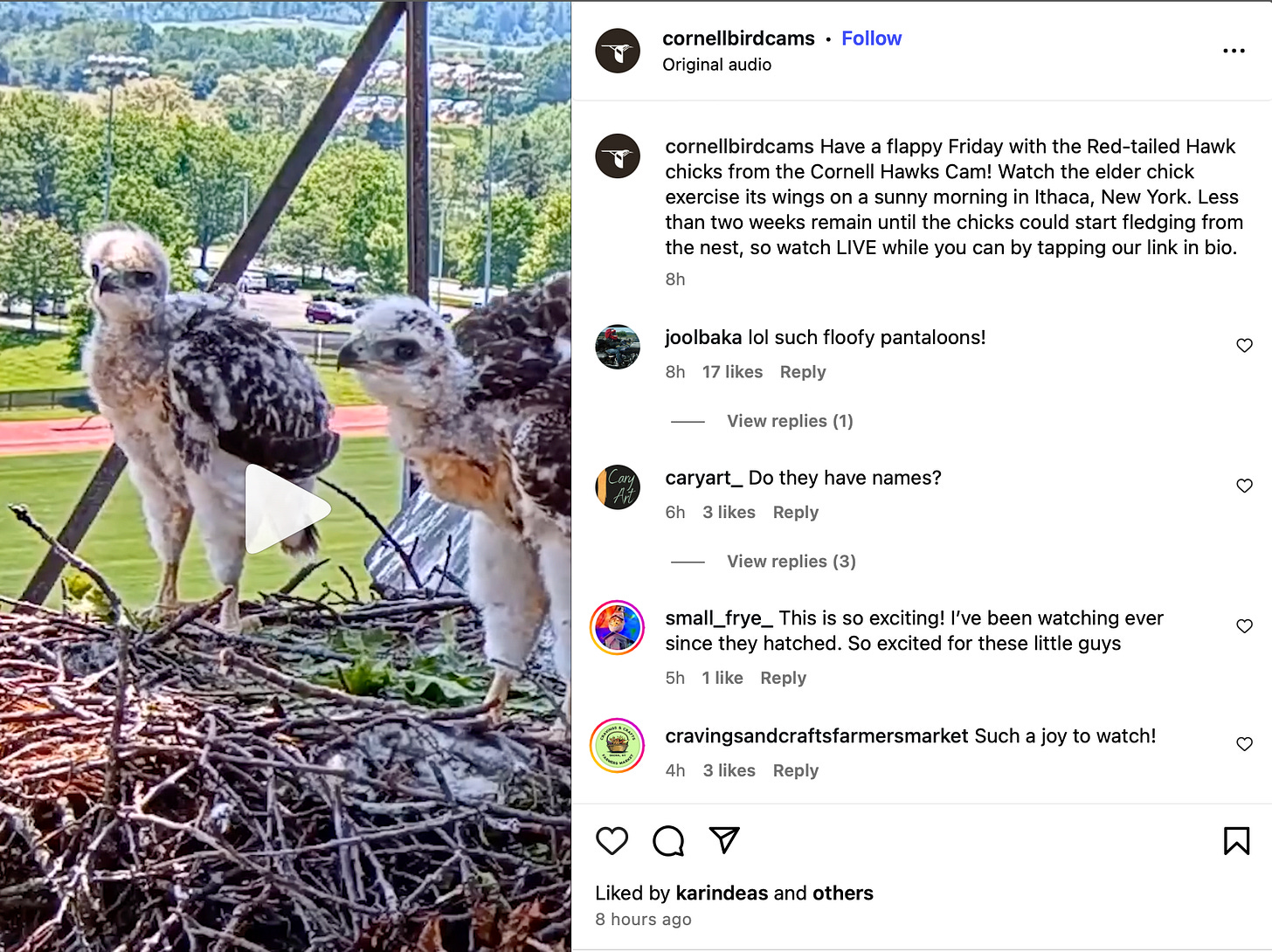1. Let’s start with a fun Wall Street Journal article on “seaside snack thieves”: A peaceful lunch on the British coast often comes with a crucial caveat: Mind the gulls! These seaside snack thieves reign as undisputed champions of opportunistic dining. As Lorna Forbes went to take a bite out of her steak bake in Swansea, a seagull swooped in and snatched it from her hands. “I didn’t even get a bite,” the 38-year-old healthcare assistant said. Birds’ ability to seamlessly swap marine food for a Big Mac—and outwit humans to get it—is a source of fascination. (via The Wall Street Journal)
2. From Down Under – another “local drinking tradition”?: Most birds go for ease when looking for drinking water. But the sulfur-crested cockatoos in the suburbs of Sydney, Australia, often prefer to quench their thirst with a challenging puzzle. In the city’s western suburbs, some of the birds have figured out how to use public drinking fountains. The mohawked parrots deftly use one foot to twist the handle open while their other claw grips the spout. It’s unclear why the cockatoos go to the effort of using drinking fountains when there are plenty of accessible water sources nearby. They don’t seem to use them more often during hot weather. One possible explanation is that the task of operating the fountains is simply more fun than sipping water from the local creeks. (via The New York Times)
By Hap Ellis, Saddle-billed Stork - Okavango Delta, Botswana.
3. A “surprisingly relatable” response from these warblers: Trafficked roads, loud noises, suffocating smog. For some people, living in the city can be stressful and unnerving. But a growing body of research shows some city birds can be more aggressive than their rural counterparts, suggesting they too feel the pressures of city life. In a study published in April in the journal Animal Behavior, researchers showed that Galápagos yellow warblers that live near trafficked roads in the Ecuadorian archipelago respond to intruders more aggressively than those living farther away from traffic. (via National Geographic)
4. Evidence that nature (and birds) can respond quickly to restoration projects (from the BBC): Rare wetland birds such as cranes and great egrets have appeared within hours of the completion of a peatland restoration project, according to the National Trust. The charity began restoring 590 acres (238 hectares) of lowland peat, a vital carbon store, at its oldest nature reserve, Wicken Fen in Cambridgeshire, a year ago. Peatland restoration project manager Ellis Selway said: "Seeing nature respond so quickly gives us real hope for the future of this landscape.” The £1.8m works also revealed a significant archaeological discovery - a 5,000-year-old bog oak that archaeologists say is older than Stonehenge. (via BBC)
5. From Audubon - Building community for blind birders: Tracy Carcione knows there’s a Fish Crow across the street—she heard it earlier today—but for now it’s keeping its beak shut. So, she demonstrates the difference between the rough, drawn-out caw of the American Crow, and then the more staccato squawk of the Fish Crow, which to me, a birding novice, sounds like a crow making fun of a gull. “They’re like snarky crows,” she says. I’m walking with Carcione along the narrow, tree-lined sidewalks of her neighborhood in Teaneck, New Jersey. It’s a bright and windy spring morning. I’ve joined her because today she’s participating in a first-of-its-kind birding event. The format is a common one: Right now, birders all over the country are logging as many species as they can in a 24-hour window. But like Carcione, and like me, every registered participant is blind or visually impaired. (via Audubon)
6. The Daily Kos’ Dawn Chorus is always a fun read for birders: My recent trip over to the Olympic Peninsula wasn’t for birding per se but any visit over there will turn up cool birds, and many of them are unknown where I live, just across the water. For some birds, factors like habitat and geography and human activity are more important than proximity. So I was on the lookout wherever we went, and did have some interesting observations. My destination was the open coast, which meant two ferries and long drives. This satellite image shows where I saw the birds in this report. As you can see, they were all on the water. The following is a photodiary of some birdies and activity I saw along the way. (via Daily Kos)
By Hap Ellis, Swallow-tailed Bee-eater - Okavango Delta, Botswana.
7. Ugh – more avian flu news: Officials in Arizona have declared an animal disease emergency over the bird flu. The President of Hickman's Family Farms outside of Phoenix says he's now lost 95% of his birds to a bird flu outbreak. That's about six million chickens. Hickman's is one of the largest egg producers in the U.S. Here & Now’s Asma Khalid speaks with Glenn Hickman, president and CEO of Hickman’s Family Farms in Arizona. (via WBUR)
8. More on bird collisions with wind turbine blades – this time from Yale Environment 360: Window collisions and cats kill more birds than wind farms do, but ornithologists say turbine impacts must be taken seriously. Scientists are testing a range of technologies to reduce bird strikes — from painting stripes to using artificial intelligence — to keep birds safe. Some potential solutions are simple, like painting turbine blades in contrasting colors. Others are complex and expensive, like using cameras with A.I. technology to shut turbines down when birds approach. If the wind industry takes birds seriously — a big “if” because only some operators currently do — the conflicts can be significantly reduced. (via Yale Environment 360)
9. Also on the renewable energy front - surprise! - solar mag says solar projects are great for birds!: Larks have become rare in the German agricultural landscape. But at this moment, I can hear several at once. There, just 30 meters away, another one takes flight. From the ankle-high grass, it soars vertically into the sky and, after just a few meters, begins to trill loudly. The nest is probably hidden somewhere below it on the ground, well camouflaged against accidental discovery. Biologist Matthias Stoefer said the high density of breeding larks in one of Germany’s largest solar parks in Brandenburg, north of Berlin, is astonishing. In his breeding territory mapping, he counted 178 spots within the solar park and surrounding areas. On average, there are 21 to 47 breeding pairs per 10 hectares. This is the highest lark density he has ever encountered. (via PV Magazine)
10. All is not lost – a report from Hawaii on endemic honeycreepers: In Hawai‘i, native forest birds are facing a crisis. Honeycreepers – small, brightly-colored, and apparently very particularly aromatic birds that live only on the archipelago and are highly specialized for that environment – are under threat from just about everything possible: all the classic problems that come with living near humans, of course, but also rampant mosquito-borne avian malaria, brought in by invasive bird species and encouraged by global warming. Faced with this onslaught, honeycreeper numbers have plummeted. Out of around 60 species that historically made up the group of birds, only 17 still exist, with all but three being classified by the IUCN as either vulnerable, endangered, or critically endangered. It is, to put it mildly, not looking good for these little birds. But here’s the good news: it may still be possible to save them. (via IFL Science)
By Hap Ellis, Marabou Stork ("The Undertaker") - Okavango Delta, Botswana.
11. We covered this last week, but for those who missed it: Hummingbird feeders are a beloved pastime for millions of backyard birders and a convenient dining spot for the birds. But for the Anna’s hummingbird, a common species in the western United States, feeders have become a major evolutionary force. According to research published this week in Global Change Biology, artificial feeders have allowed the birds to expand their range out of Southern California up to the state’s northern end. They have also driven a transformation of the birds themselves. Over just a few generations, their beaks have dramatically changed in size and shape. (via Science)
12. Over 30 million people have downloaded the Cornell Lab of Ornithology’s Merlin app – and for good reason: It’s an almost universal feeling: the thrill of hearing a mysterious new bird song. And it’s usually followed up by the question: What was that bird? In 2021, the question got much easier with the introduction of Sound ID in the Cornell Lab’s free Merlin Bird ID app. At the time of the feature’s launch, Merlin could recognize the sounds of 400+ species from the U.S. and Canada, and has since expanded to cover more than 1,300 species across parts of the Americas, Europe (Western Palearctic), and India. (via All About Birds)
By Hap Ellis, White-crowned Lapwing - Zambezi River, Zambia.
13. And speaking of the Cornell Lab, check out your favorite bird (or birds) with the Lab’s “eBird Status and Trends”; one example - the Baltimore Oriole: This map depicts the cumulative change in estimated relative abundance from 2012 through 2022 with circles representing 27km x 27km regions. Red indicates decline and blue indicates increase. The darker the color, the stronger the trend. White circles represent locations where the trend estimate is not significantly different from zero (i.e., the 80% confidence interval contains zero). Circle sizes are scaled by the estimated relative abundance at the middle of the time period. (via eBird)
14. Finally, a quick look at Black-necked Stilts, plus some camera info for the photographers among us: As a birder, I’m always excited to see the black-necked stilts return to Soap Lake. I learned that they can be seen there a few years ago. Last year I didn’t see them when I ventured over, but this year I got lucky! They are such a showy bird of black and white with those beautiful pink legs. My camera is a Canon EOS 90D and my lens is a Tamron SP 150-600mm G2. This was shot in Burst Mode, as the majority of my bird photos are. Birds move quickly and I want to catch every second! (via Seattle Times)
Bird Videos of the Week
Video by NBC News, “Bird watching retreat for the blind makes exploring nature accessible”.
Gerrit Vyn - American Arctic Birds.
Cornell Live Bird Cam - Elder chicks.
Cornell Live Bird Cam - Northern Royal Albatross landing.









